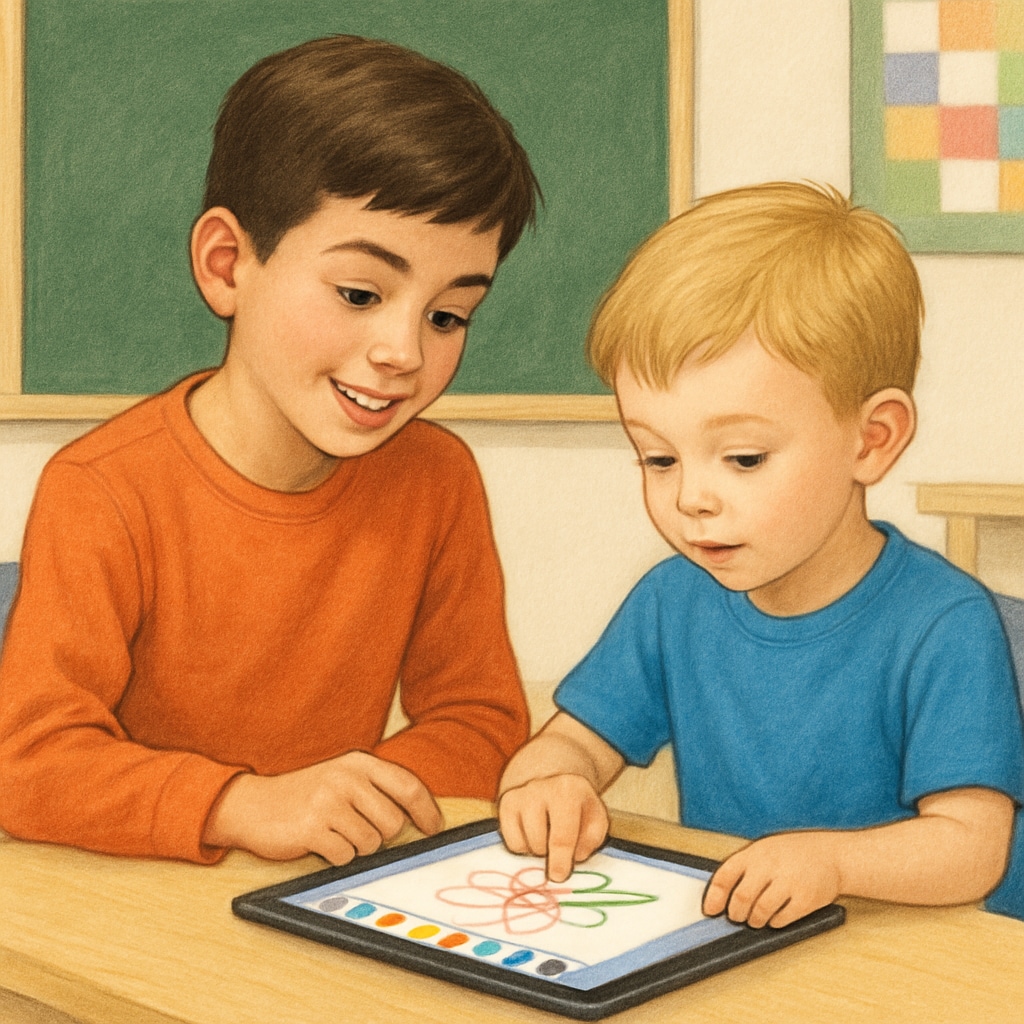Creating meaningful connections between younger and older students can be an enriching experience for all participants. In this article, we explore how cross-grade learning activities can bridge the gap between kindergarten and fourth-grade students. These activities promote collaboration, develop computer skills, and encourage teamwork. The “kindergarten partnership program” is an excellent example of how cross-grade activities can be structured to foster mutual growth and learning.
Why Cross-Grade Activities Matter
Cross-grade activities provide opportunities for children of different ages to learn from each other. Kindergarteners benefit from the guidance and mentorship of older students, while fourth graders develop leadership and communication skills. These experiences also help build empathy and understanding across age groups, creating a supportive learning environment. For example, engaging in projects that combine creativity and technology can foster teamwork while developing essential skills.

Creative Activities for Kindergarten and Fourth-Grade Collaboration
Designing activities that suit the developmental stages of both kindergarteners and fourth graders requires thoughtful planning. Here are some ideas for interactive and engaging projects:
- Story Creation: Pair kindergarteners with fourth graders to create a short story together. Fourth graders can help with writing and structure, while kindergarteners contribute ideas and illustrations.
- Art and Science Projects: Work together on simple experiments or artistic endeavors, such as building paper bridges or crafting models of ecosystems.
- Computer Skills Workshops: Teach basic computer skills to kindergarteners with the help of fourth-grade mentors. For example, they can learn how to use drawing apps or navigate educational websites.
Incorporating Structured Computer-Based Learning
Technology can play a significant role in cross-grade activities. Structured computer-based projects allow students to collaborate while developing practical skills. Here are some examples:
- Interactive Games: Use educational games that require teamwork, such as puzzle-solving or math challenges.
- Digital Storytelling: Create a story using digital tools, where older students manage the technical aspects while younger ones add creative input.
- Simple Coding Activities: Introduce basic coding concepts through drag-and-drop programming platforms like Scratch, allowing both age groups to enjoy a collaborative learning experience.

Planning and Execution Tips
To ensure the success of cross-grade activities, consider these tips:
- Set Clear Objectives: Define what you aim to achieve through the activity, such as improved teamwork or skill development.
- Pair Wisely: Match students based on their interests or personalities to encourage compatibility and cooperation.
- Provide Guidance: Offer clear instructions and support to both age groups, ensuring that each participant understands their role.
- Celebrate Success: Recognize achievements to build confidence and motivation among students.
As a result, these cross-grade activities can create lasting connections and foster a love of learning in both age groups. They combine creativity, technology, and teamwork to produce a holistic educational experience.
Building bridges between kindergarten and fourth-grade students through collaborative activities not only enhances their learning journey but also strengthens their interpersonal skills. By integrating creative projects and structured computer-based learning, educators can create a dynamic and inclusive environment for all participants.


